Student Blog
What are OS/OT?

Adaptation Elation: Equipment Creation! ⟩
November 11, 2015, by Ariel
Classes What are OS/OT?
As an occupational therapist to-be, I’m always keeping my eyes peeled for cool products that will help my future patients live their lives to the fullest.
Today in class, we had the opportunity to not only learn about adaptive equipment, but also try our hands at designing our very own product! As part of our lesson, we were given an “adaptive equipment challenge,” a la Iron Chef, where we were told to use the materials given to us (cardboard, duct tape, foam pipes . . . creativity) to create a piece of adaptive equipment. My team made a prototype for an adaptive chair, called the ‘Astro Chair Unlimited.’ We designed it specifically to help support children who have difficulty sitting upright when otherwise unsupported. Our product includes a fully padded seat cushion to relieve pressure and keep kids comfortable, a fun customizable (space-themed!) design, and supports on each side intended to help the child stay seated in an upright position while at a tabletop. 3-2-1 . . . ENGAGE in meaningful activities!!!
Here’s a picture of our final creation:

Adaptive chair
Another group in my class chose to make an adaptive Catch Game. Here’s a photo of what they came up with:
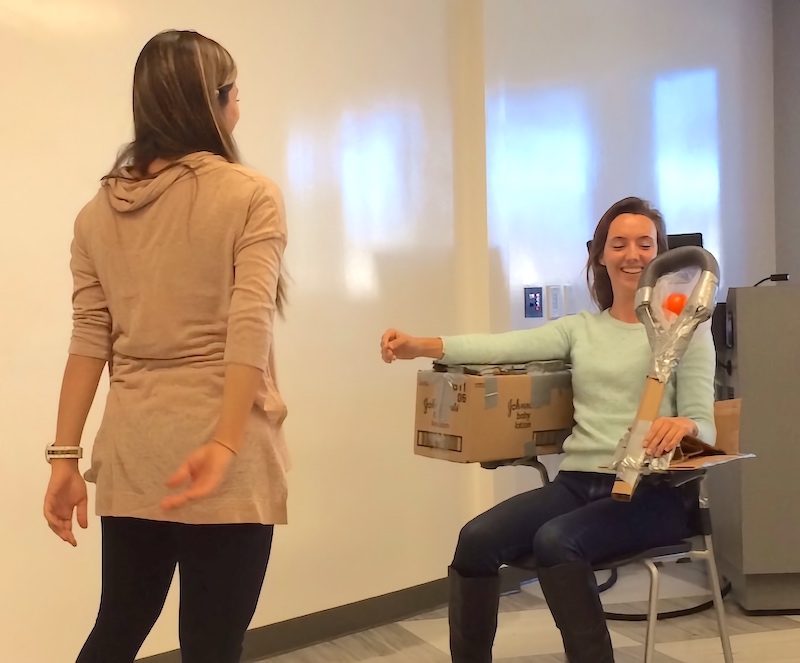
Catch Game
After prototyping our adaptive chair, I was interested in what else was out there for people with disabilities. Given what I found through my research, it seems like the possibilities are truly endless! Here are just a few of the ideas that struck my fancy.
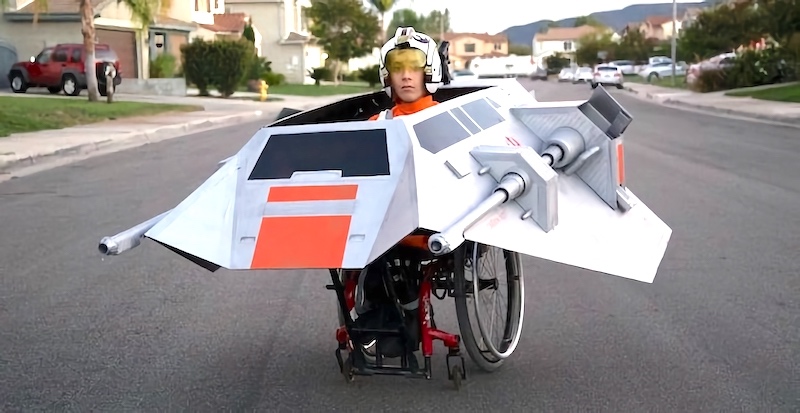
A “Star Wars” snowspeeder atop a child’s wheelchair, complete with flapping wings and working guns that shoot glowing Nerf darts

Shoes for children or adults with splints or AFOs

An adaptive croquet mallet
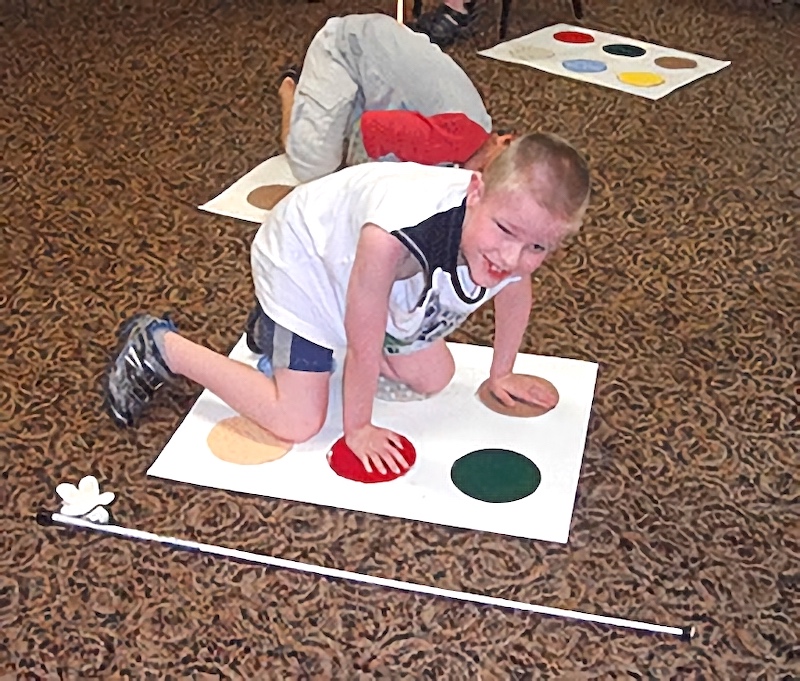
Braille Twister game
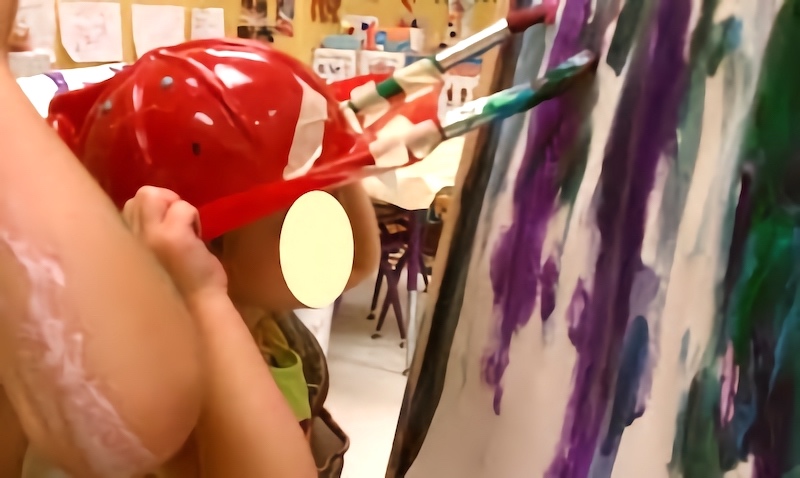
Painting with hats
These ideas, and the plethora of others out there, are such great sources of inspiration. As Maria Montessori put it, “Watching a child makes it obvious that the development of his mind comes through his movements.” We as occupational therapists have the pleasure of helping people in all walks of life — no matter what their abilities — become truly UNSTOPPABLE!
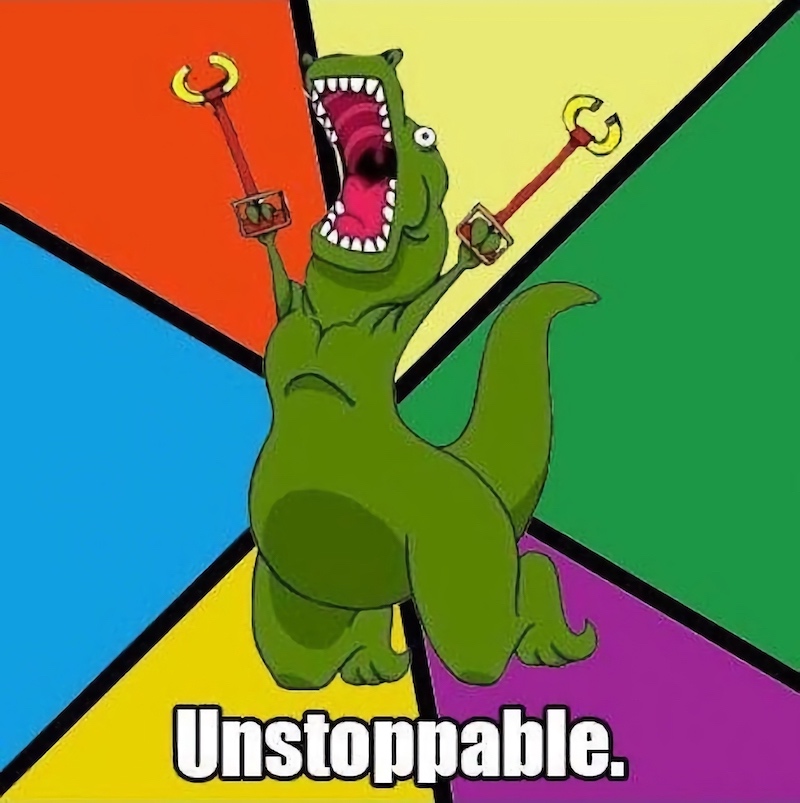
⋯

Learning How To Dress in OT School! ⟩
November 10, 2015, by Rashelle
Classes What are OS/OT?
In OT 502: Adult Physical Rehabilitation, we have a lab every week to learn practical skills that we can incorporate when treating patients — this week depicted below, focused on the activity of dressing.

Sock Aid and Dressing Sticks
The picture on the left demonstrates me using a sock aid! This assistive device is often utilized with adults, who have physical limitations that make dressing difficult. The sock aid can facilitate modified, independent dressing for people following surgeries to the hip, spine or legs, or for those who may live with chronic diseases such as arthritis, multiple sclerosis or Parkinson’s disease. Within that same lab, we learned about the benefits of dressing sticks, button hooks and reachers to assist with upper body dressing (as pictured on the right).
Additionally, in my level 1 fieldwork rotation, I learned how to dress a patient with compression bandages, in order to treat edema. Edema is a condition in which a person has a fluid buildup in a part of their body. By dressing patients with these bandages about once a week, the fluid can drain away from the swollen region.

Edema Bandaging
(That’s my foot! I even got the real patient experience by having to lay in the hospital bed).
Furthermore, while you can learn these patient dressing techniques at most occupational therapy schools — USC also teaches students how to dress professionally and with school spirit!

Joe and Ellen Dressing Professionally
Here, Joe Ungco, a fellow student ambassador, and Ellen Wleklinski, an OTD resident are modeling their business attire, which we wear often for class presentations, fieldwork, conferences, meetings or interviews.

USC tailgate outfits
Finally, we FIGHT ON proudly with our traditional USC attire for football games, tailgates and other sporting events.
⋯

Getting Crafty with Neuro! ⟩
November 7, 2015, by Heather
Classes What are OS/OT?
In our first semester of the Entry-Level Master’s Program, we take a course called the Foundations of Neuroscience. For many students, it is one of their favorite classes. It is challenging, instructive and interesting. Not to mention, it is taught by Dr. Leah Stein Duker, who is incredibly talented, intelligent, and well respected within the Division and the entire field of Occupational Therapy.
As part of the course, we are provided the opportunity to get creative with a “neuro project” of our choosing. Many of the projects that my classmates chose to create depicted the functions of the various structures of the brain. To name a few: the neural pathways, the cortical homunculus of the primary motor cortex, and the innervations of the the central and peripheral nervous systems.

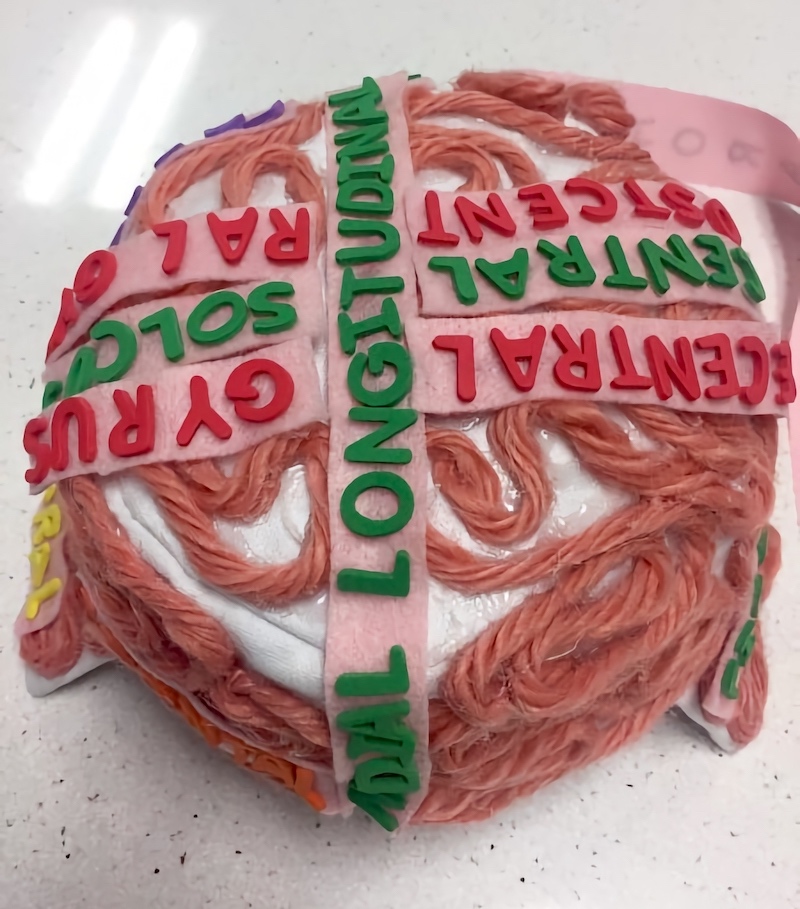
For my extra credit project, I created the peripheral nerve distribution of the hand as part of the brachial plexus. I did this project because I am interested in hand anatomy and the biomechanics of the upper extremity. Unfortunately, I do not have a picture of my project to share, however, I took a photo of another classmate’s project that did something similar by sewing the innervations of the hand together in glove form.
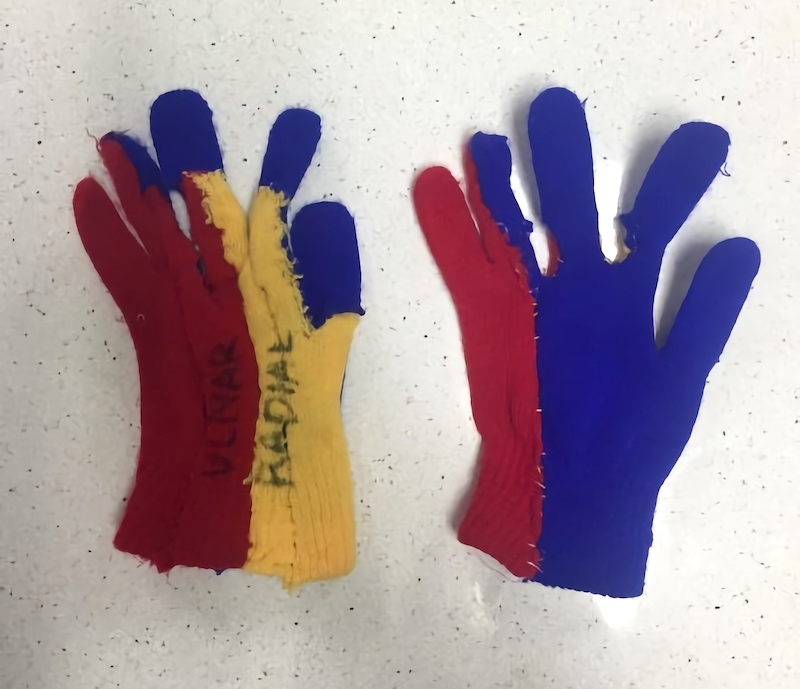
And just to get a little technical on you, the brachial plexus are formed from the junctions of the anterior rami from C5-T1. They innervate the entire upper limb. The nerves that I painted on the hand are the musculocutaneous nerve (green), the ulnar nerve (blue), the median nerve (yellow), and the radial nerve (red). Voila!
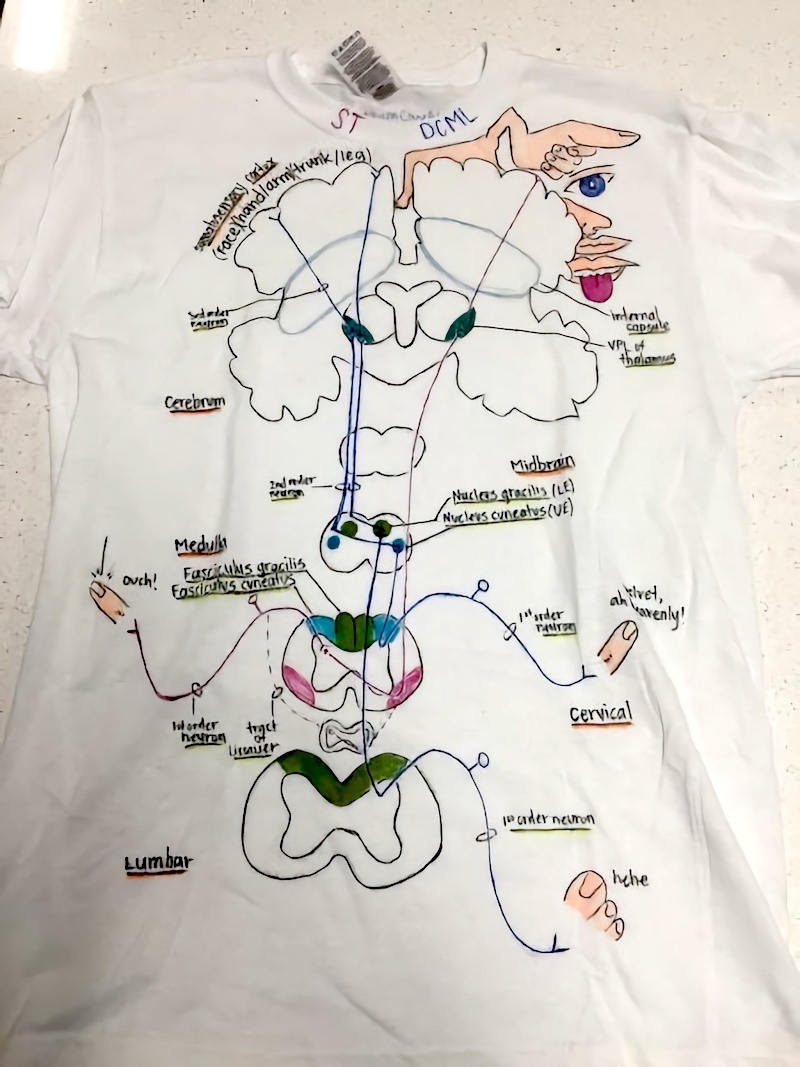

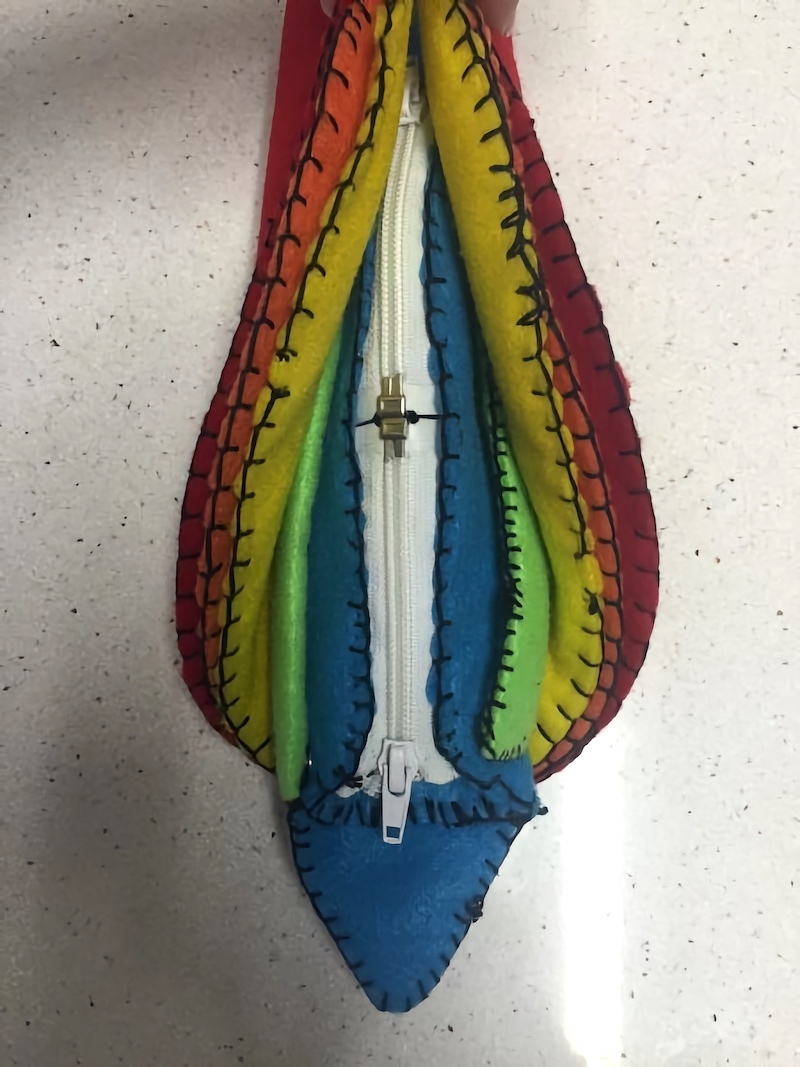
P.S. If anyone can tell me what this last project is supposed to be, comment and you will get a gold star!
⋯

OTAC and Magic and Rose Floats, Oh My! ⟩
October 28, 2015, by Ariel
Getting Involved What are OS/OT?
Last weekend, I headed to Sacramento for the annual OTAC Conference. This conference, put on by the Occupational Therapy Association of California, is an opportunity for OTs and OT students to spend a weekend immersing themselves in the world of occupational therapy. Through its wide array of courses, symposiums, special speakers, and after hours parties, the OTAC experience always reinvigorates me and adds new perspective to the work we do.
One of my favorite parts of conference this year was listening to the keynote address. Our speaker, Kevin Spencer, gave an impassioned speech about the power of arts-integrated approaches to promote functional and social skills development. His intervention, Healing of Magic, uses the act of learning and teaching magic tricks to help patients regain lost physical skills while increasing motivational levels and self esteem. His unique intervention is a testament to the level of creativity that occupational therapists can incorporate into their interventions!
Check out this video of Kevin Spencer doing his thing!
Another awesome part of conference was participating in USC’s efforts to get Occupational Therapy a float in this year’s Rose Parade! During some down time, my classmates and I filmed an Ice-bucket-challenge-inspired video, in which we informed the public of our campaign, which will help support OT’s Centennial Vision of getting occupational therapy widely recognized and globally connected. We’ve pledged, as a department, to donate $2,017 to forward our goal. And we’ve challenged Boston University to do the same. Let the OT Rose Parade Challenge BEGIN!
When we weren’t at conference, my friends and I took advantage of Sacramento and the fall season by visiting a pumpkin patch! As someone who had never been to one before, I didn’t know what to expect. To our surprise, we found a sensory experience on our adventure we hadn’t even expected — A CORN PIT!!! As future occupational therapists, we hopped right in!
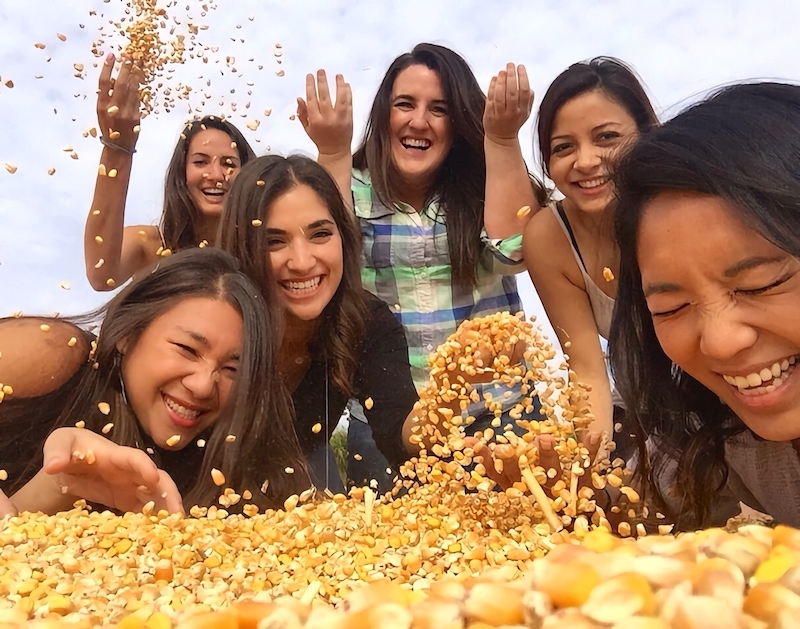
⋯

OTAC Conference 2015 ⟩
October 27, 2015, by Jodie
Getting Involved What are OS/OT?
This past weekend, many of my classmates and I traveled to Sacramento to attend OTAC Conference! As the second-year OTAC student delegate, I was responsible for helping with the student track sessions and as a student ambassador, I volunteered at the OTAC Rose Float booth and our USC Chan booth. Although I had a packed schedule, it was so much fun collaborating with students and faculty from different programs across the state! Some of the student track session topics included: grassroots advocacy training, OTs role in the NICU, stress management and lifestyle balance for OT practitioners, as well as many other exciting topics! As a student attending conference, we were also invited to attend the President’s Reception, where the work of OT/OTAs in pediatric, early intervention, and school-based practice were celebrated. We were also able to explore the Exhibit Hall to network with exhibitors and listen to poster presentations from OT practitioners and students! As a special bonus treat for being a proud Trojan, students were also invited to attend the Trojan Alumni party. This reception was sponsored by our Trojan family and allowed us to network with past and current OT faculty while enjoying some refreshments. Here are some of my pictures from our wonderful weekend at conference!

We had the opportunity to explore Sacramento during our free time! Do you recognize that building we are standing in front of?!
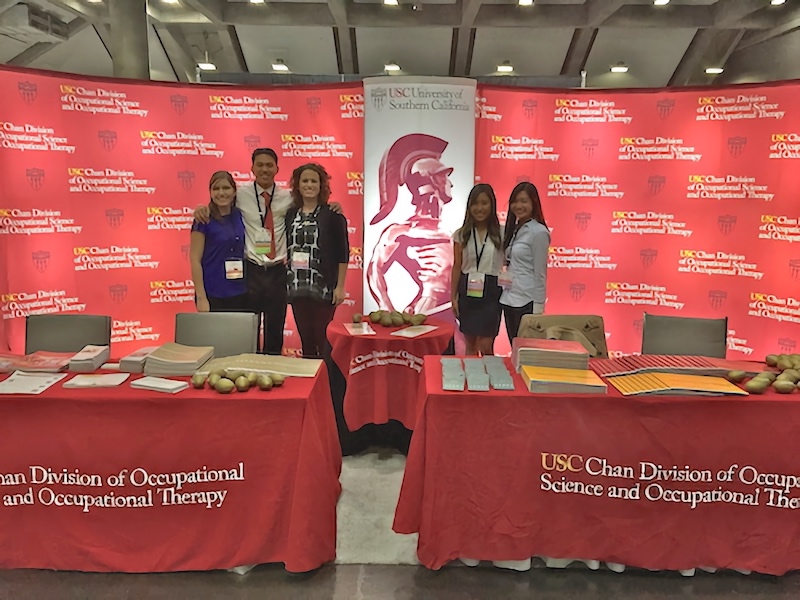
Doesn’t our USC Chan OT booth look amazing?! Thank you to my wonderful classmates who helped put this entire booth together!
As always, I hope you’ve enjoyed my blog! 😊
⋯





